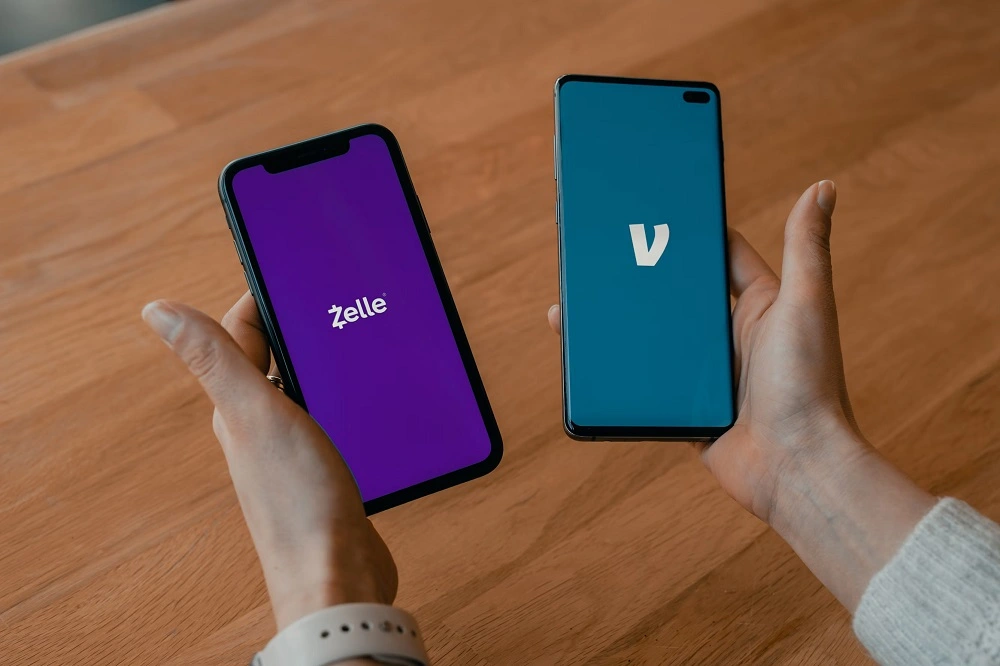Peer-to-peer (P2P) payment apps are changing the way people move money – faster, simpler, and more personal than ever. By 2025, over 178 million Americans are expected to use them, signaling a massive shift toward cashless, digital-first finance.
But the real opportunity lies ahead. With 1.4 billion adults still unbanked, P2P payment technology can unlock access to financial services and reshape how people exchange value across the world.
If you’re planning to develop a P2P payment app, now is the perfect time! Whether you’re a fintech startup, a product manager, or a curious entrepreneur, this step-by-step guide will help you build an app that’s fast, secure, and scalable.
Inside, you’ll find everything from essential features and compliance tips to architecture advice, development cost estimates, and strategies to reduce risk.
Ready to turn your idea into the next big thing in fintech? let’s get to it!
Why build a P2P payment app?

The freelance economy is booming, with over 1.57 billion people worldwide expected to work independently by 2025, all needing fast reliable, and low-fee payment options.
At the same time, the white-label payment gateway market is projected to reach USD 2.02 billion by 2025, with steady growth anticipated through 2030. This trend opens new opportunities for banks, enterprises, and startups to deliver branded payment experiences without starting from scratch.
In essence, a well-built P2P payment app is more than a simple transaction tool. It’s a gateway into a larger fintech ecosystem that strengthens user trust, fosters loyalty, and creates long-term revenue streams.
The real challenge now isn’t about whether the market will expand but about who can move fast enough to capture user trust before the next fintech wave arrives.
Types of P2P payment app
Not all P2P payment apps work the same way. The right model depends on how funds move, who holds the money, and what user experience you aim for. Let’s break down the main types:
| Type of P2P payment app | Description | Key features | Development complexity level | Popular examples |
|---|---|---|---|---|
| Standalone P2P apps | Independent platforms dedicated to facilitating peer-to-peer transactions. | User-friendly interface, quick transfers, integration with banks/cards, and social networking. | Moderate | Venmo, Cash App, Zelle |
| Bank-centric P2P apps | Apps developed by financial institutions, often integrated into existing banking apps. | Secure, reliable, direct account transfers, and often zero or low fees for transactions. | High | Chase QuickPay, Wells Fargo SurePay |
| Social media integrated P2P apps | Embedded in social media platforms to allow money transfer via chats or friend lists | Social sharing, instant messaging integration, emoji/gif support, socail notifications | High | Facebook Pay, WeChat Pay |
| International money transfer apps | Designed for cross-border transactions and currency exchanges. | Multi-currency support, real-time exchange rates, compliance with KYC/AML, multi-region support | High | PayPal, TransferWise (Wise), Western Union |
| Niche P2P apps | Apps targeting specific market needs or demographics (e.g., local communities, freelancers). | Specialized features tailored to target users, such as expense tracking, project management. | Variable | Splitwise, Venmo for Business |
How they work (in simple terms)
At their core, all P2P apps follow a similar flow:
- User onboarding & linking: Connect a bank, card, or wallet.
- Payment initiation: Choose recipient and amount
- Authorization: Transaction verified via OTP, biometric, or digital signature.
- Transfer & notification: Funds move through the selected rail, and both parties are notified.
Takeaway: Understanding these models helps you decide whether to build from scratch or leverage an existing payment infrastructure – a key factor in cost, compliance, and go-to-market speed.
Key features that your P2P payment app must have
A successful P2P payment app isn’t just about sending money. It’s about building trust, speed, and convenience at scale. Here are the must-have features your app needs to stand out:
1. Instant money transfer
Users now expect transactions to be completed in real-time. It’s estimated that the number of instant-payment transactions will increase from around 3 billion to almost 30 billion by 2028 in the EU alone. Delays or frequent failures in money transfers can lead to dissatisfaction and drive users away from your app.
Make sure the transfers are processed in real-time with minimal delay. As your app scales, it should be able to handle growing transaction requests. Keep it seamless and immediate!
2. Transaction history with filters
There’s no worse feeling than scrolling through endless pages to find a specific transaction. Users often review their past activities for budgeting, record-keeping, or tax purposes. Let users filter their transaction history by date, amount, or recipient – so they can manage their finances without frustration.
This feature allows users to find exactly what they need, reducing frustration that can lead to you losing a customer. Help your users make transactions, not leaving them struggling.
3. Payment request & Invoice
Most P2P payment apps are used for personal purposes. In some cases, users need to request payments, whether for shared expenses or business transactions.
Your app should enable users to send payment requests and generate invoices to simplify money collection . This feature is particularly valuable for freelancers and small businesses, improving cash flow management and providing a professional touch to transactions.

4. Real-time notification
Users want to know exactly when transactional activities are made. Whether it’s receiving money, successful payments, or failed transactions, keep users informed in real time. Send out push notifications as soon as the transactions come through.
Real-time notifications enhance user engagement by providing instant updates and alerts. This helps users stay informed about their account activity, promoting trust and encouraging continued use of the app.
5. Customer support
Problems can arise at any time. When it does, users often need assistance in resolving issues related to their transactions or app features. That’s why robust customer support is paramount.
Reach your customers through chat, email, or phone and reassure them that help is always available. Effective support leads to higher user satisfaction and retention. 73% of consumers will switch to a competitor after multiple bad experiences. Unless you want to lose users, keep them engaged and satisfied!
Additional features to consider:
- Multi-currency support: Facilitates international transfers by allowing users to send and receive money in different currencies.
- Bill splitting: Allows users to divide expenses among a group, simplifying shared spending situations.
- Exchange rate calculator: Helps users understand and calculate currency conversion costs before making international transfers.
- Biometric authentication: Enhances security by allowing users to log in using facial recognition or fingerprints.
- Loyalty and reward programs: Encourages frequent use by providing points or cashback rewards for transactions.
The step by step guide to building a P2P payment app
Here’s a complete guide to help you build a winning P2P payment app.
Step 1: Discovery and strategy
Duration: 1-3 weeks
Team involved: Founder/Product manager, business analyst, compliance advisor, UX lead.
The discovery phase lays the groundwork for everything that follows. Your mission here is simple: validate the demand, define your users, and align your idea with real market needs. Too many P2P startups rush into coding before knowing who they’re serving, and end up building the wrong thing.
Start by understanding how people in your target market actually move money – from freelancers needing instant global payments to friends splitting bills or SMEs handling recurring transfers. Define your revenue model and map out compliance requirements like KYC/AML, data protection, and licensing. Getting this right early prevents expensive pivots later.
By the end, decide your direction: standalone app, bank partnership, or wallet integration. This single choice will shape your budget, launch timeline, and growth potential.
Deliverables:
- Validated problem statement & product vision
- Defined user personas and monetization model
- Regulatory and compliance checklist
- Go-to-market direction (app type & partnership model)
Step 2: Outline core features & compliance strategy
Duration: 2-3 weeks
Team involved: Product manager, tech lead, compliance advisor
After validating your market and business model, the next step is to define the scope of your MVP and ensure compliance from day one. The goal here is not to list every possible feature, but to prioritize what delivers real value to your users while staying within legal boundaries. Skipping this step or overloading your MVP can delay launch and confuse early adopters.
Focus on identifying core functionalities that solve the most urgent user problems, then map out additional features that can increase engagement and retention in future updates. At the same time, align your product with regulatory requirements such as KYC/AML, data protection laws, and licensing standards. Integrating compliance early helps prevent costly rewrites and builds trust with users and investors.
Deliverables:
- MVP scope and prioritized feature list
- Compliance checklist for your target market
- Risk assessment and mitigation plan
- High-level technical documentation outline

Step 3: Design a simple, intuitive MVP experience
Duration: 2-4 weeks
Team: UX/UI designer, product manager, frontend lead
At this stage, your goal is to turn the MVP scope into an experience that users can actually understand and trust. A technically solid app will fail if flows are confusing, security feels opaque, or interactions take too many steps.
Focus on streamlined user journeys for your core actions, while embedding trust and compliance cues along the way. For example:
- Keep money transfers, payment requests, and balance checks minimal and intuitive
- Provide instant confirmations and clear feedback at each step
- Integrate security and compliance in a visible but non-intrusive way (verification prompts, transaction limits, data privacy notices)
- Test interactions with low-fidelity prototypes to spot friction before coding
This approach ensures your MVP is usable, reliable, and engaging from day one, setting a strong foundation for future features and iterations.
Deliverables:
- Wireframes and clickable prototypes for core flows
- User journey maps highlighting pain points and friction
- UI design guidelines aligned with brand and compliance
- Usability test insights and recommendations
Pro tips: Up to 52% of users won’t interact with your P2P platform if it has a bad mobile experience. Since most of your customer base comes from mobile devices, it’s best to put extra effort into designing seamless mobile UX/UI. Keep branding consistent across app and website to build familiarity and trust.
Step 4: Build the MVP with right tech and team
Duration: 4-8 weeks
Team: Tech lead, backend & frontend developers, QA engineer, devOps
With designs and MVP scope validated, it’s time to turn your plans into a working product. The key is to choose the right approach and assemble a capable team. Many startups struggle by either picking the wrong tools or overcomplicating development, which delays launch and inflates costs.
Before starting, decide how you will build your MVP. There are three common approaches:
| Option | Pros | Cons |
|---|---|---|
| Hire a P2P App Development Company | Expertise: Access to specialized skills in P2P payment solutions. Efficiency: Established teams often work faster due to refined processes. Support: Offers ongoing maintenance and updates, ensuring stability and up-to-date technology. | Cost: Can be expensive, particularly for custom features and longer projects. Control: Limited control over the development approach and scheduling. |
| Build In-House | Control: Full oversight of process allows for tailoring development to specific needs. Alignment: Can closely align the app with company goals and culture, ensuring tight integration with existing systems. | Resource-intensive: Requires hiring and potentially training new staff, increasing initial costs. Time-to-market: Development can take longer if the team is inexperienced or resources are limited. |
| Use a White-Label Solution or SDK | Speed: Rapid time-to-market as foundational technology is pre-built. Cost-effective: Lower upfront investment compared to custom development. | Customization limits: Restrictive in terms of bespoke features and branding elements. Dependence: Rely on provider for updates and support, which can affect flexibility and adaptability. |
Once the approach is clear, focus on robust execution:
- Choose a technology stack that balances speed, scalability, and maintainability
- Ensure secure integration with banks, wallets, or payment gateways
- Implement modular architecture to allow future features like bill payments, savings, or lending
- Follow an agile development process: iterative builds, early testing, and quick adjustments
Pro tip: Choosing the right technology stack is essential for building a robust MVP. Common stacks include:
- Frontend: React Native, Flutter (for cross-platform development)
- Backend: Node.js, Django, or Ruby on Rails
- Database: MongoDB, PostgreSQL
- Cloud Services: AWS, Google Cloud, Azure for scalability and flexibility
This stage is about getting a functional MVP live realiable, compliant, and user-ready – while leaving room for enhancements after validation.
Deliverables:
- Fully functional MVP with core features implemented
- Integrated payment gateways and secure connections
- Modular architecture ready for scaling
- Deployment plan and technical documentation
Step 5: Test for security, compliance & usability
Duration: 2-4 weeks
Team: QA Engineers, Security Specialists, Compliance Advisor, UX Researcher
Before launching your P2P payment app, it’s crucial to validate that it works securely, legally, and delivers a smooth user experience. Here’s how to do it!
First, check the security level your P2P payment app offers. It deals directly with monetary transactions, so you want to keep things as threat-proof as possible. Check if the following features run correctly or implement them in case you haven’t:
- OTP (One-time passwords): Implement OTPs for an added layer of security during transactions and sensitive operations.
- Encryption: Use robust encryption methods to protect data in transit and at rest, safeguarding user information from unauthorized access.
- Fraud prevention: Incorporate fraud detection algorithms to identify and mitigate suspicious activities, ensuring a secure environment for users.
Next, be aware of compliance requirements. Some of the more notable ones are:
- KYC/AML (Know Your Customer/Anti-Money Laundering): Develop systems to verify user identities and monitor transactions to comply with KYC and AML regulations.
- PCI DSS (Payment Card Industry Data Security Standard): Adhere to PCI DSS requirements to protect cardholder data and maintain payment security.
- CCPA/GDPR: Ensure compliance with data protection laws such as the CCPA (California Consumer Privacy Act) and GDPR (General Data Protection Regulation) to protect user privacy and data rights.
Regulatory requirements may vary by country or region. In addition to the standards above, consult local authorities or legal advisors to ensure full compliance wherever your app will operate
Adopt iterative testing cycles: fix issues, update the app, and retest. Early feedback not only reduces risk but also ensures your MVP resonates with users and builds confidence in your product.
Deliverables:
- Security audit report with identified vulnerabilities and fixes
- Compliance verification checklist and documentation
- Usability test reports including pain points and recommended improvements
- Updated MVP incorporating fixes and feedback
Pro tip: Consider engaging a Quality Assurance (QA) team with expertise in fintech to manage these specialized testing areas. Their insights will help ensure your app meets industry standards for security, compliance, and performance.
Step 6: Launch, learn, and scale your P2P payment app
Duration: Ongoing
Team: Product Manager, Marketing Lead, Customer Support, Tech Lead
With your P2P payment app thoroughly tested, it’s time to launch it. If you’ve done your research well, you should know where your customers are. Use corresponding tools and marketing channels to reach them. For Gen Z users, social media platforms are the most effective.
Make sure you have a robust support system for handling user inquiries & collect feedback post-launch. This is vital for improvement. Pay attention to reviews, conduct user surveys, and analyze user behavior using analytics tools (such as Google Analytics or Mixpanel). This feedback will provide insights to help you improve the app.
Think of every transaction as a chance to strengthen trust, retain users, and generate long-term value. By combining careful analysis with agile iteration, your P2P app can grow from a simple MVP into a full-fledged fintech ecosystem.
Deliverables:
- Launch report with initial KPIs and performance metrics
- User feedback log and prioritized improvement roadmap
- Updated product backlog for iterative releases
- Growth and scaling plan including potential partnerships and new features
How much does it really cost to build a P2P payment app?
A P2P payment app can cost anywhere from $50,000 to over $200,000 to develop from scratch. The final price tag varies based on multiple factors. The two most prominent contributors to the cost of P2P payment app development are:
- Location of the development team: Development costs can vary greatly by region. For example, hiring developers in North America or Western Europe typically costs more than hiring in Eastern Europe or Asia.
- App complexity: The complexity of the app, including features like instant transfers, security, compliance measures, and UI/UX design, significantly impacts cost.
To help you visualize this better, we’re broken down the cost and timeline estimates into two separate views below:
Estimated cost by app complexity level
| App complexity | Estimated cost range | Estimated timeline |
|---|---|---|
| Basic | $40,000 – $100,000 | 4 – 6 months |
| Moderate | $60,000 – $150,000 | 6 – 9 months |
| Complex | $90,000 – $200,000+ | 9 – 12 months |
Estimated cost by development team location
| Location | Estimated cost range | Estimated timeline |
|---|---|---|
| North America | $100,000 – $150,000+ | 4 – 6 months |
| Eastern Europe | $50,000 – $70,000 | 4 – 12 months |
| Asia | $40,000 – $60, 000 | 4 – 12 months |
| Africa | $45,000 – $70,000 | 4 – 12 months |
Whether you’re building a simple prototype or a full-featured payment app, understanding how complexity and team location impact cost is key to smart budgeting. To optimize your investment, consider working with offshore teams that balance affordability with fintech expertise.
Challenges in building a P2P payment app
Building a P2P app isn’t just about coding features. It’s about navigating a high-risk, high-stakes environment filled with security threats, compliance issues, and skeptical users.
Security
Robust security is crucial to safeguard customer information. Developers face the challenge of implementing powerful measures, such as encryption, secure authentication methods, and real-time fraud detection, to protect against breaches and unauthorized access.
Security challenges are further compounded by the evolving nature of cyber threats. Attackers constantly try to find and exploit new vulnerabilities, requiring regular security updates.
If you fail to maintain high-security standards, your P2P payment can suffer significant financial losses, reputational damage, and legal consequences.
Regulatory compliance
The regulatory landscape is troublesome to say the least. Developers must ensure their app adheres to various financial regulations, such as KYC (Know Your Customer), AML (Anti-Money Laundering), and data protection laws like GDPR or CCPA.
If your P2P payment operates internationally, you must adhere to local requirements of all jurisdictions. Some processes ask for certificates or licenses that take years to obtain. Non-compliance can result in hefty fines, service restrictions, or even the app being shut down.
User acquisition
Although digital payments are increasingly popular, convincing users to switch to a new app can be difficult due to trust issues, data migration hassles, and familiarity with existing platforms. Building a user base demands more than a solid app. Businesses must invest in marketing strategies that highlight the app’s unique value propositions and build brand awareness. These marketing and user acquisition efforts require significant upfront investment and may take time to yield visible results
Overcoming skepticism and converting casual users into loyal advocates requires excellent customer support, consistent performance, and positive word-of-mouth or social proof, which can be challenging to cultivate in a competitive market.
Integration with existing financial systems
Banking infrastructures are complex and varied, making integration a real struggle. Compatibility issues, ununiformed data formats, and varied security protocols are just a few of the many challenges your P2P payment app needs to solve.
Moreover, the app must accommodate various transaction processes and standards to function effectively across borders. Establishing partnerships with banks and financial services can be time-consuming, requiring negotiation and compliance with their specific requirements.
How can Synodus help you with P2P payment app development?
Building a P2P payment app is complex, but with Synodus, you don’t go it alone. We partner with fintech startups and established enterprises to deliver secure, scalable, and user-friendly payment platforms that thousands of users rely on.

Our team of over 250 fintech experts leverages pre-built modules and agile processes, helping clients launch apps typically 30 percent faster than industry standards.
You can choose to either use a pre-build solution and customize it to your needs or build from scratch to ensure maximum flexibility. Whatever you decide, we’ll be with you every step of the way, from planning to post-launch.
We know the challenges of building such a platform: from data encryption and fraud prevention to complying with KYC and GDPR regulations. Our legal and compliance experts ensure your app is market-ready and legally sound.
Meanwhile, user experience is a top priority. We design smooth onboarding, intuitive interfaces, and optimized performance to foster trust and engagement from the first tap.
Integrating with existing financial system? We’re got you covered. Our developers have seamlessly connected apps with banks, e-wallets, and other financial platforms, ensuring your app works effortlessly with the systems that matter most.
Wrapping up
Building a P2P payment app is a journey full of opportunities and challenges. By following the right steps, from defining your MVP and compliance strategy to designing user-friendly flows and ensuring secure transactions, you can create a product that delights users and grows your fintech ecosystem. Now it is time to take action, start planning your MVP, validate your idea, and bring your innovation payment solution to life.
How useful was this post?
Click on a star to rate it!
Average rating / 5. Vote count:
No votes so far! Be the first to rate this post.




